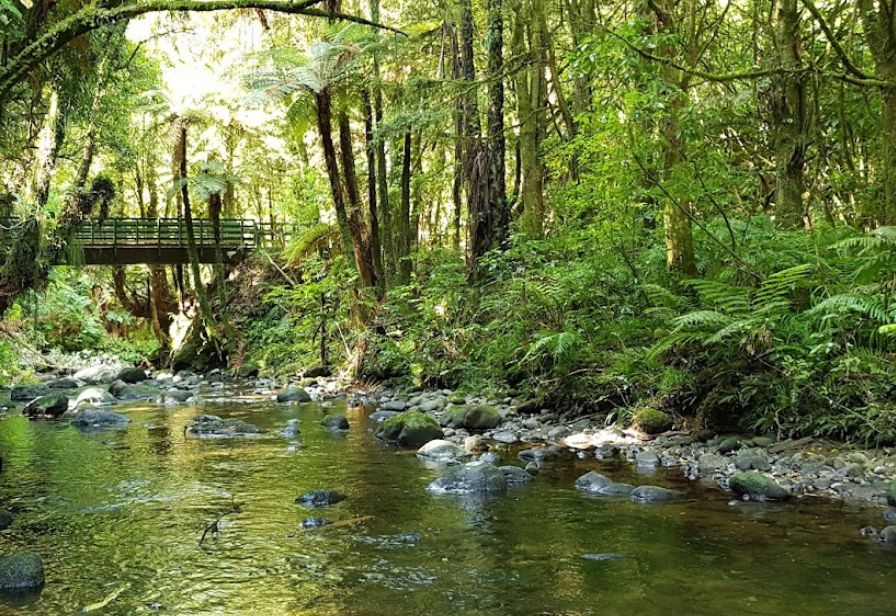Taranaki Regional Council has launched its latest community conversation that will help shape how it manages the region’s freshwater.

Have your say on the next steps for Taranaki's freshwater at trc.govt.nz/freshwater
The public’s views are being sought on key environmental goals for the region’s rivers, streams, groundwater, lakes and wetlands and setting a long-term vision for six Freshwater Management Units which would care for the precious resource.
Council Chair Charlotte Littlewood urged the community to have their say as the ‘Next Steps for our Freshwater’ conversation will inform the development of specific targets and limits in a new Natural Resources Plan in order to protect and restore Taranaki’s waterways and ecosystems.
“Our wai is vital and we need to hear from people across the region about how we safeguard freshwater now and for future generations,” says Mrs Littlewood.
“We have to make sure that we’re putting in place the right targets and limits to achieve positive outcomes for our rivers, streams and lakes. This will help make them more swimmable and provide greater protection for native plants and animals and the ecosystems they live in.
“The Council’s mission is to work with our community as we care for Taranaki. We’d urge everyone to spare time to share their views as your kōrero will directly affect how we carry out this mahi and how wai is managed ki uta ki tai (from source to sea).”
The Next Steps for Our Freshwater conversation is asking the public about four areas:
- How an objective in the Natural Resources Plan will give effect to Te Mana o te Wai (the mana of the water);
- The aspirations in a draft long-term vision for the six Freshwater Management Units;
- Environmental outcomes for a range of ‘values’ including ecosystem health, human contact, drinking water, fishing and commercial and industrial use;
- Establishing principles for how targets are set.
The Council is creating the Natural Resources Plan in response to the Government’s Essential Freshwater reforms introduced in 2020. These nationwide reforms aim to stop further degradation of freshwater, start making immediate improvements and reverse past damage to bring waterways and ecosystems to a healthy state within a generation.
After holding a kōrero with the community in 2022 on the proposed freshwater management units and what people thought were importants values in those areas, the current consultation will feed into the development of the Natural Resources Plan next year.
The public will again have a chance to provide feedback before hearings into the Plan, which is set to become operative at the end of 2024, in a community conversation on specific targets and limits in February.
“We have an extensive process to go through to establish how freshwater is managed and what targets and limits are set but it’s vital we get this right as the Natural Resources Plan will be a generational strategic document which will guide how we protect and manage physical resources,” says Mrs Littlewood.
The community conversation runs between 25 September and 27 October. To have your say, head to trc.govt.nz/freshwater.
What are Freshwater Management Units (FMUs)?
- The six proposed FMUs for Taranaki are the Northern Hill Country, the Pātea Catchment, the Waitara Catchment, the Coastal Terraces, the Southern Hill Country and the Volcanic Ring Plain.
- Every waterbody in the region needs to be contained within an FMU.
- Within each FMU the Council will set time-specific freshwater goals aligned with community and iwi aspirations to build better environmental outcomes and plan and prepare for the future.
- The Council has drafted the initial FMUs based on a few core concepts:
- Keeping it simple - fewer FMUs will ensure we aren’t over-complicating things
- Ki uta ki tai – from the source to the sea to ensure that catchments are not divided
- Grouping catchments of similar types (for example, Volcanic Ring Plain catchments vs Hill Country catchments vs Coastal Terraces catchments etc)
- Using catchment boundaries instead of rivers as boundaries.
Natural Resources Plan: what is it?
- The Natural Resources Plan(external link)for Taranaki will replace the Regional Freshwater Plan and other statutory documents such as the Regional Policy Statement, Regional Air Plan and Regional Soil Plan.
- Feedback from the public will guide targets, limits and rules in the Plan.
- The Plan will help Council to promote the sustainable use, development and protection of our natural and physical resources.
- The Plan will be publicly notified in mid-2024 prior to formal submissions and a hearing process.
- The very tight timeframe arises from the requirements of the Government’s freshwater programme.
Engagement timeline
- April 2021-December 2021: Freshwater vision, values and Freshwater Management Units
- Spring 2023: Freshwater outcomes and vision aspirations
- Early 2024: Limits and targets
- End 2024: Natural Resources Plan notified